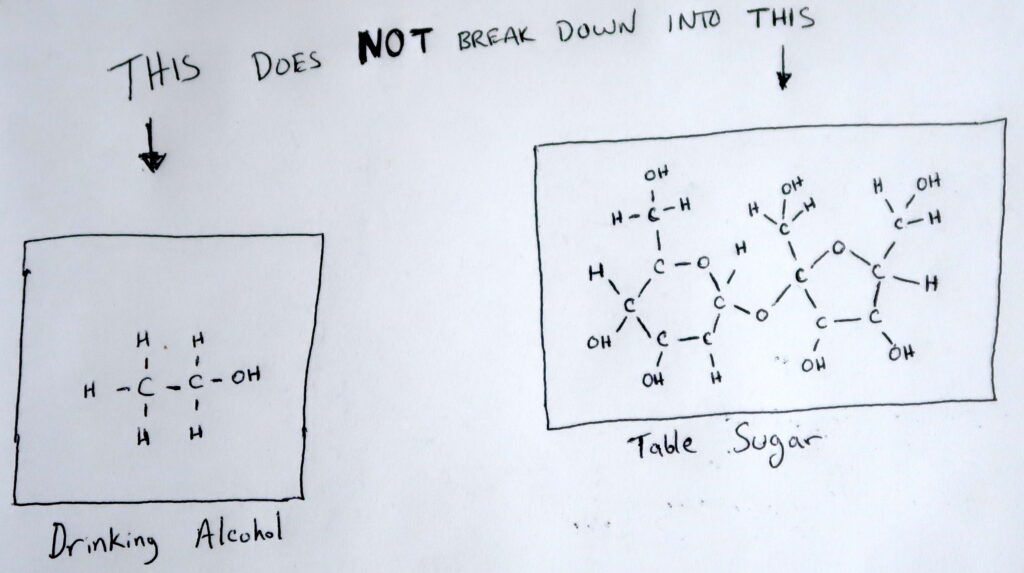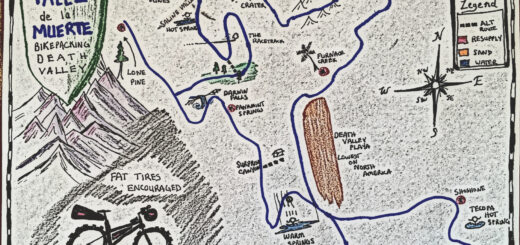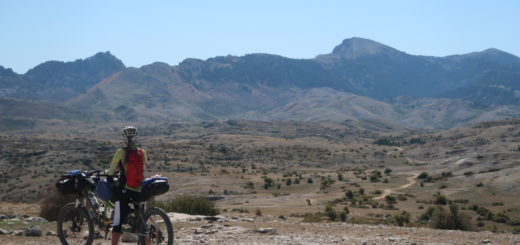Type 1 diabetes FAQs – I thought you weren’t allowed to drink alcohol because alcohol turns into sugar!
Now that we and many of our friends are fully immunized, we’ve explored having meals with friends after a one and a half year hiatus. It’s great to be able to do this again! Another thing that immediately resumed when I started eating in front of other people again were the questions about what I am “allowed” to eat. A good example is a conversation I had the other day:
Person:
“I thought you weren’t allowed to drink alcohol because alcohol breaks down into sugar.”Me:
“No, your body doesn’t have a way to convert alcohol into sugar.”Person:
“No, I’m pretty sure that alcohol turns into sugar.”Me:
“Maybe you’re thinking of beer or mixed drinks which CONTAIN sugar – but whiskey and dry wines do not have any sugar in them. Also, a beer like Michelob Ultra only contains 2g of carb. I can sometimes drink Michelob Ultra without injecting any insulin.”Person:
“Hmmm.. Well, I’ve always thought that alcohol turns into sugar. Hmmm.”
Other times, the belief in this “alcohol turns to sugar” myth is expressed more subtly. At dinner parties, the host will often go around offering alcohol to everyone – notably passing by me! This is their polite way of tacitly acknowledging that they remembered I have Type 1 diabetes and I’m not allowed to have alcohol.
So, to dispel this myth, we’re going to study (just a tiny bit) of Biochemistry. I promise, it will be SUPER easy. A picture is worth a thousand words, so I drew one that should clearly illustrate why the idea that alcohol (ethanol) does not break down into table sugar (sucrose):

Hopefully this drawing illustrates in a simple way that a small molecule such as ethanol (drinking alcohol) doesn’t “break down” into a more complex molecule such as sucrose (table sugar). By the way, I did have to look up how to draw the sucrose molecule.
Hopefully the above image helps reverse this myth! Also, while we’re on the topic, don’t forget that it is impolite to question or to tell an adult diabetic that they are not allowed to eat something. This doesn’t just apply to adults: Many type 1 diabetic children also know their bodies well enough to know how to manage their own diabetes.1
The above ought to be enough information to dispel the myth for the average reader. That’s enough biochem for the day if you want to stop reading now!
More Science for the Hardcore
While my drawing hopefully illustrates clearly how a small molecule such as ethanol doesn’t break down into a larger molecule like table sugar, glucose is actually the type of sugar that our bodies utilize. Glucose is also what diabetics are testing when they measure their “blood sugar”. In my drawing, you see see a sucrose molecule because that is what most people think of when they refer to “sugar”. It turns out that sucrose is a “disaccharide”, which means that it is composed of two sugars:
The word “disaccharide”, broken into its parts is “di” and “saccharide“.
- “Di” means “two” – for example, in a “dilemma” you have two choices.
- Saccharide means “sugar.”
So sucrose is actually two sugars: one glucose (which is what almost all of your body cells use for energy), and one fructose (another type of sugar). There are actually a few more types of sugar that people consume, but we won’t address those here.
It turns out that while alcohol does not turn into sugar, it can still provide your body with energy. Alcohol is chock full of energy – gram for gram, nearly as much as fat:
Carbohydrate: 4 calories per gram
Protein: 4 calories per gram
Fat: 9 calories per gram
Alcohol: 8 calories per gram
So, while alcohol doesn’t turn into sugar, it actually can provide quite a bit of energy to the body as it is being broken down. Alcohol is broken down in four steps:
Step 1:
C2H6O (ethanol) → C2H4O (acetaldehyde – very toxic)
Step 2:
C2H4O → C2H4O2 (acetic acid – vinegar)
Step 3:
C2H4O2 → acetyl-CoA
Step 4:
acetyl-CoA → 3H2O (water) + 2CO2 (carbon dioxide)
Interestingly, you may or may not absorb all of the energy (calories) from alcohol! It is possible that you pee out some of the acetic acid in step 2 before it has a chance to undergo the remaining steps. Thus your body wouldn’t take on that extra energy (which could potentially be stored and manifested as weight gain). Also interesting is that step 1 actually uses energy (that’s burning calories)! To give you an idea of how many calories we are talking about, a “standard” drink contains about 14 grams of pure alcohol. So 14g * 8 calories/gram = 112 calories. So, that means that a “standard drink” has roughly 112 calories from the alcohol. A standard drink is ~1.5oz of distilled spirits @40%ABV (like whiskey)… or ~5oz of wine @12%ABV… or 12 ounces of “regular” beer @5%ABV. I’ll occasionally drink up to 10oz of wine in an evening, so that is about 224 calories from wine.
For type 1 diabetics, zero-carb alcoholic beverages (whiskey, dry wines) will usually lower blood sugar initially. The common theory for this is that the liver gets tied up prioritizing the very important step 12 above. According to this theory, the alcohol suppresses gluconeogenesis – which is the formation of new sugar by the liver. It turns out that this is a bit more controversial and complex.3 Most type 1 diabetics will actually use a bit less insulin initially if they drink a zero-carb alcoholic beverage with a meal. Later, after the alcohol has been processed, the type 1 diabetic may or may not have to inject a correction dose to make up for the lower dose administered earlier before the meal.
Other types of alcohol, such as beer, often come packed with carbohydrates. Each type of beer is different. Michelob Ultra beer has only as much sugar as a single small-size Sweet Tart tablet. If you combine the slight blood sugar lowering effects of the alcohol along with the slight amount of carbohydrate (sugar) in the beer, the two might balance themselves out in some people. That would mean that it might not initially be necessary to take an insulin dose to drink a light beer for some people. On the other end of the spectrum are heavier beers or mixed drinks vary significantly in their carbohydrate content. For that reason, I personally don’t bother with the complexity of dosing insulin for those types of drinks – but an adult type 1 diabetic is definitely able to figure out how to do that if they want.
As a side note, I want to emphasize that I don’t think any amount of alcohol consumption is “healthy”. In recent years, I’ve reduced my daily consumption to zero. Now-a-days, an occasional drink (or two) in a social atmosphere is all I’ll do. Those social drinks often result in the line of questioning which prompted me to prepare this post.
I hope you learned something from this post and that it wasn’t too overwhelming science-wise! Also, please remember the following:
All material on this website is provided for your information only and may not be construed as medical advice or instruction. No action or inaction should be taken based solely on the contents of this information; instead, readers should consult appropriate health professionals on any matter relating to their health and well-being.
References & Footnotes
- Note: I’m not saying that kids should drink alcohol, though!
- Note: Step 2 is also very important, as acetaldehyde is very toxic, but that occurs in other tissues
- Reference: Ethanol stimulates glycogenolysis and inhibits both glycogenesis via gluconeogenesis and from exogenous glucose in perfused rat liver https://pubmed.ncbi.nlm.nih.gov/15331888/






























Thank you Brian! I always, yes always learn something from you.
Wow, cool. You probably already knew most of it, though!
Although no longer a microbrew craft ale by definition………Lagunitas DayTime IPA 3 grams. 4%
Hops! We will have to experiment with that beverage on our Oregonian Adventure. Can’t wait!
Awesome. Love getting this education. It is a post I’ll read a few times to soak it in- metabolise it. I shall remember to look out for the Ultras.
Family is everything! (including the the saying, “friends are family you choose”